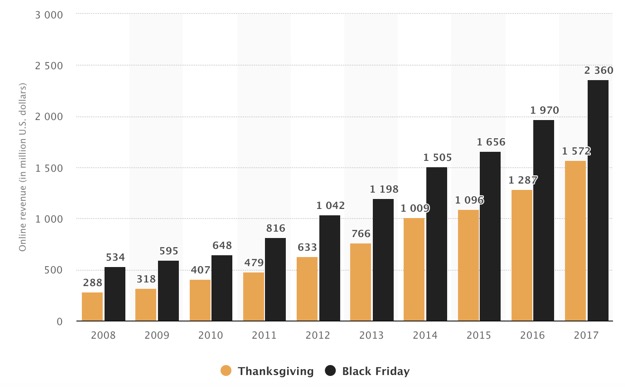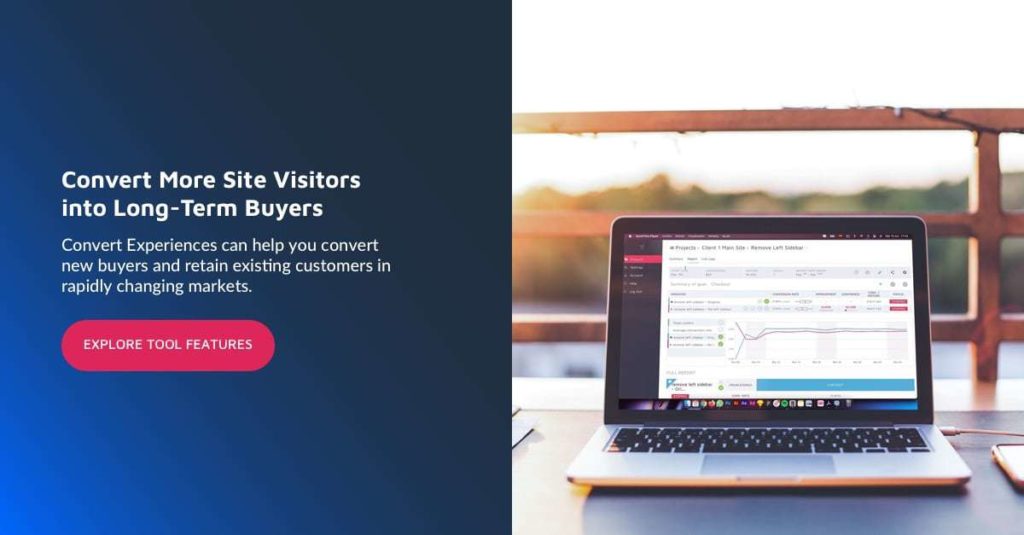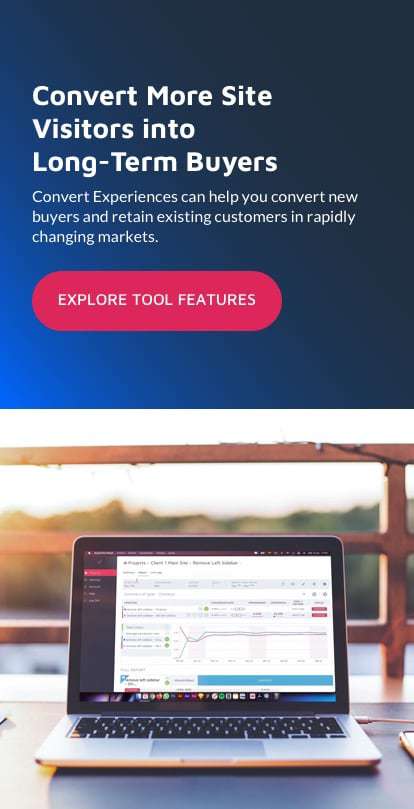How to Set Up A Seasonal Content Marketing Campaign That Converts
Seasonality provides a unique marketing opportunity. Thanks to yearly seasonal trends, we can predict how customers are going to react to our marketing campaigns.
It’s that predictability of shopping behaviors that make a holiday season such an effective sales booster.
On top of that, the end-of-year season is the highest in sales. According to Statista, online revenue has been increasing steadily over the past decade and jumped from $1.97 billion in 2016 to $2.36 billion in 2017.
People buy seasonally and they buy a lot. According to BigCommerce, almost 40% of yearly online sales are generated in October, November, and December.
And while seasonal sale boosting tactics can vary, using seasonality-based content marketing will support just about any strategy.
Here’s how to create a powerful seasonality-based content marketing strategy that aims at conversion boosting:
1. Create a Year-Long Content Calendar
Which seasonal trends matter to your business year by year? Were you able to spot some particular shopping behaviors during some months of weeks each year?
Make a list of those. Talk to your sales and customer support teams and ask them to expand and improve your list. Those people know your customer and when they shop best.
Don’t go crazy though. Most niches I’ve ever dealt with had 3-5 seasonality-based trends a year. These normally are:
- Spring (spring cleaning, getting ready for summer, etc.)
- Vacations (traveling, beach season, etc.)
- Back-to-School
- Christmas and New Year
Of all of those, Christmas is by far the biggest and the most universal one. Just about any business can sell stuff on Christmas. Whether those are decorations or gift ideas (or at least gift cards), there’s something for any business.
Your calendar should also have clear dates when you need to start preparing for each trend. Keep in mind that arranging and creating content assets takes time, so start earlier to be able to publish something right at the peak of interest.
These days people start preparing for changing seasons earlier, especially when it comes to the biggest season. Christmas decorations are going earlier every year, and Christmas promotional campaigns are starting before Halloween.
So how to plan things out?
Your very first year of seasonality-based content strategy will be the toughest. The good news is, the following year you will be able to reuse many of those assets after updating them.
To determine your timing for each of the seasons, use Google Trends. With it, you can identify when people are searching for a particular term the most. For example, [spring cleaning] trend seems to be dying out but it consistently moves earlier in the year. For example, in 2015 fell onto the beginning of April, while in 2020 it peaked in the middle of March:
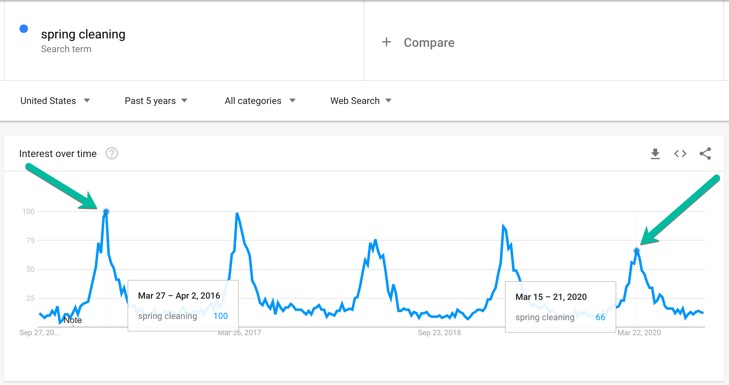
To create a seasonality-based content plan, I use Google Spreadsheets because they are free, made for collaboration, and can be dated and color-coded. Here are a few neat Google Spreadsheet templates to create a schedule.
2. Come up with Content Topics that Complement Your Sales Funnel
When it comes to seasonality, content serves as a top-of-the-funnel asset that is used to attract customers to the site. Since holiday searchers and shoppers are always in a hurry, you need to come up with content ideas that would send them straight into the funnel.
Additionally, those topics should focus on keywords that rank as search engine traffic remains the most effective source of high-intent traffic.
Possible (and obvious) content ideas may revolve around:
- Gift ideas (for specific demographic)
- How-to (decorating) guides
- Tips to get organized and avoid holiday stress
Spend some time browsing your favorite keyword research tool to identify a searchable keyword.
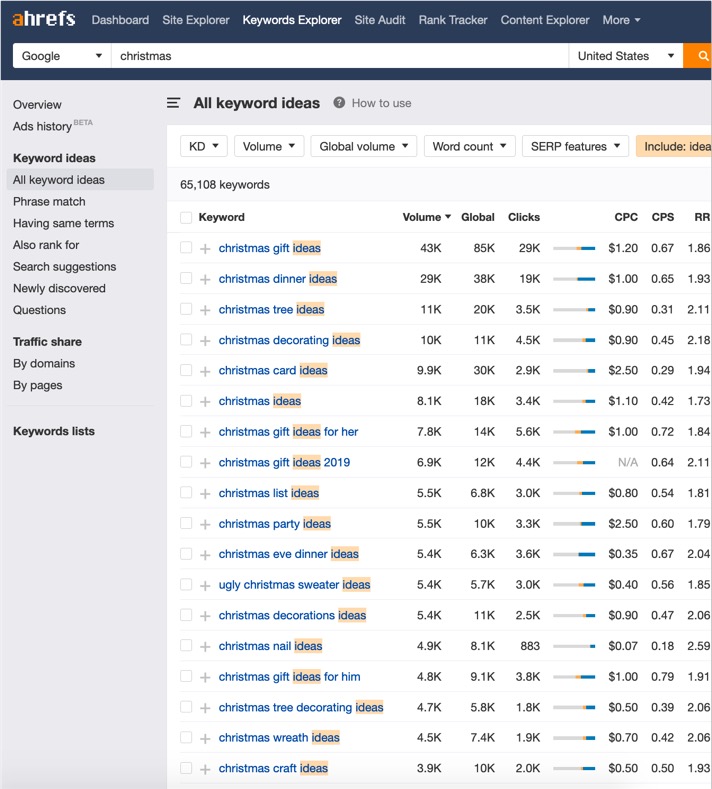
Monitoring your competitors’ content and email marketing tactics will also give you lots of ideas of how they integrate seasonality into their marketing routine.
Another tool that will be of much help here is Text Optimizer which uses semantic analysis to:
- Help you discover more angles for your article
- Optimize for search intent (which topics will satisfy search users’ needs better)
- Overall, create more in-depth, better-researched articles
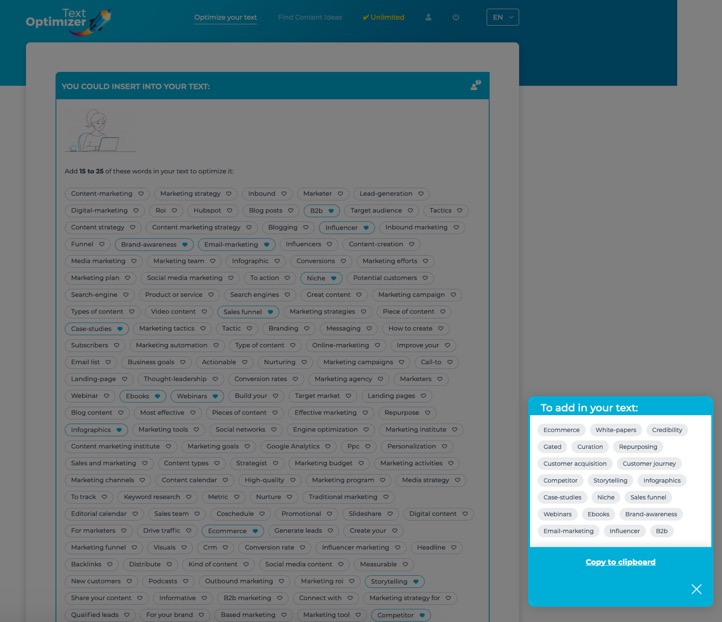
3. Diversify Content Formats
Content diversification helps on many levels, including an ability to rank in more than organic listings and an opportunity to re-use more content assets on social media.
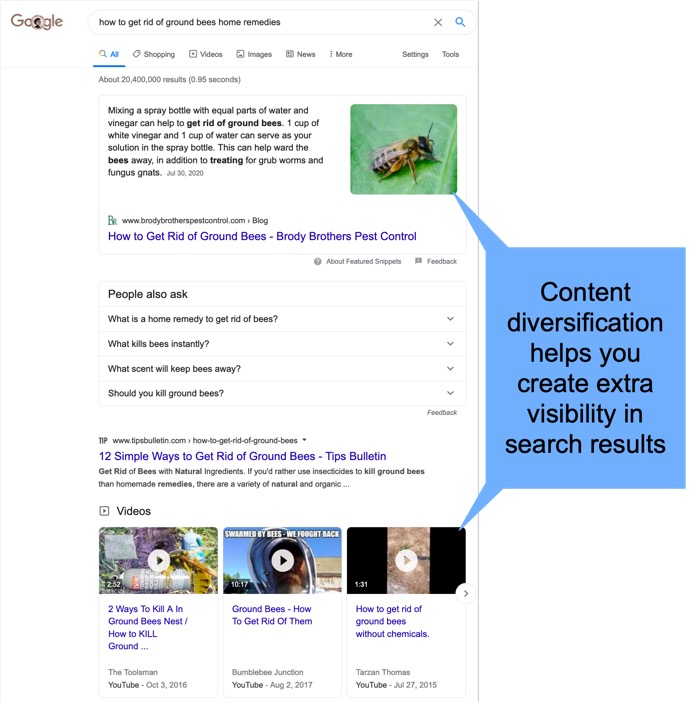
The good news is that you can plan and even create those diverse assets beforehand, and you don’t even need to spend huge budgets on that.
Tools like Venngage allow you to create infographics, downloadable brochures and whitepapers from the comfort of the common dashboard. You can also access all those assets at any point to edit and re-use them next time you are preparing for a season.
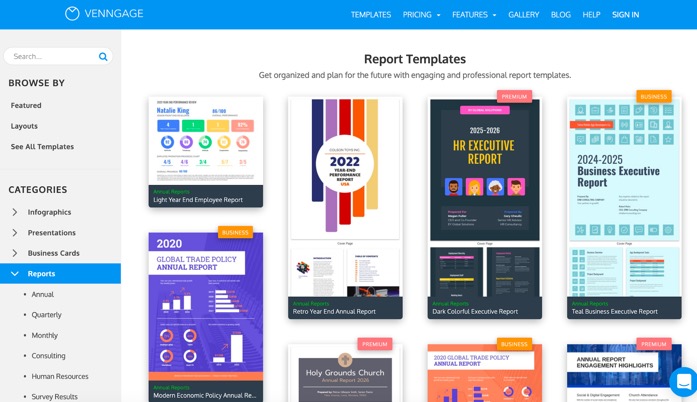
Renderforest is another useful content diversification tool that allows you to create videos, animations and slideshows. The tool is easy to use while allowing you to put together professional cartoon animations and whiteboard videos.
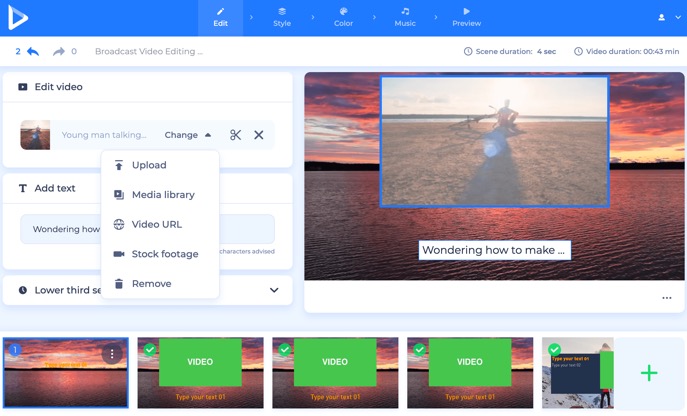
There are, of course, many more online graphic design tools to create more diverse and professional visual content.
4. Re-Use Data from Previous Years
There’s one important aspect of following your niche seasonality-based marketing routine every year is that you are investing in data.
And it is not just your list of actual customers who are likely to buy again the following year, as you already know a lot about them, including their buying habits and when they are more likely to convert.
This data you are accumulating also includes:
- People who signed up for your trial or added products to their shopping carts but never actually converted. You can always reach out to them, and if you use segmentation right, you’ll reach out when they are more likely to finally buy.
- People who visited your seasonal content or landing pages. These people can be reached through retargeting.
When it comes to retargeting, you have two options (and I recommend making the most both):
- Use the Facebook remarketing option to reach Facebook users who visited your site (this is done by using Facebook pixel)
- Use on-site retargeting to better accommodate your site returning visitors. This can be done by Finteza which is an independent web analytics software that also comes with a powerful remarketing solution.
When using Finteza, you can create a separate campaign to personalize CTAs and banners based on the seasonal campaign that brought leads to your site:
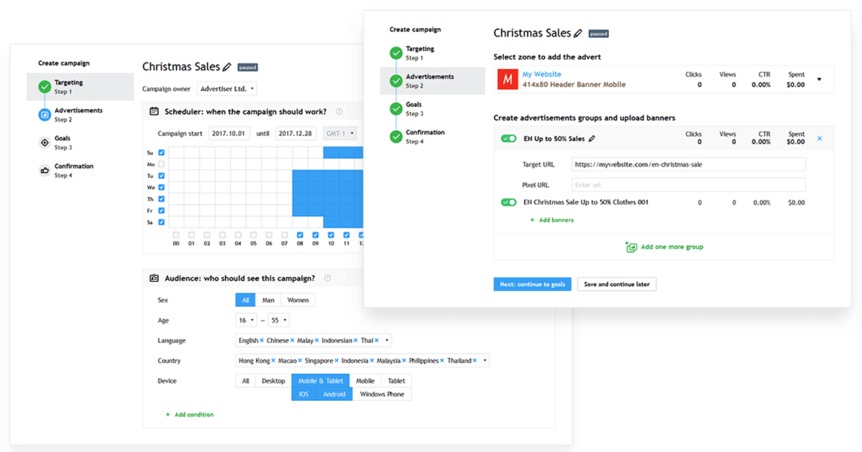
Conclusion
Seasonality is the biggest opportunity for businesses to boost sales, as well as create a long-term marketing strategy based on the data and assets you build with each campaign. Hopefully, the above steps will help you bring your seasonality-based content marketing to the next level. Good luck!
Written By
Ann Smarty

Edited By
Carmen Apostu

